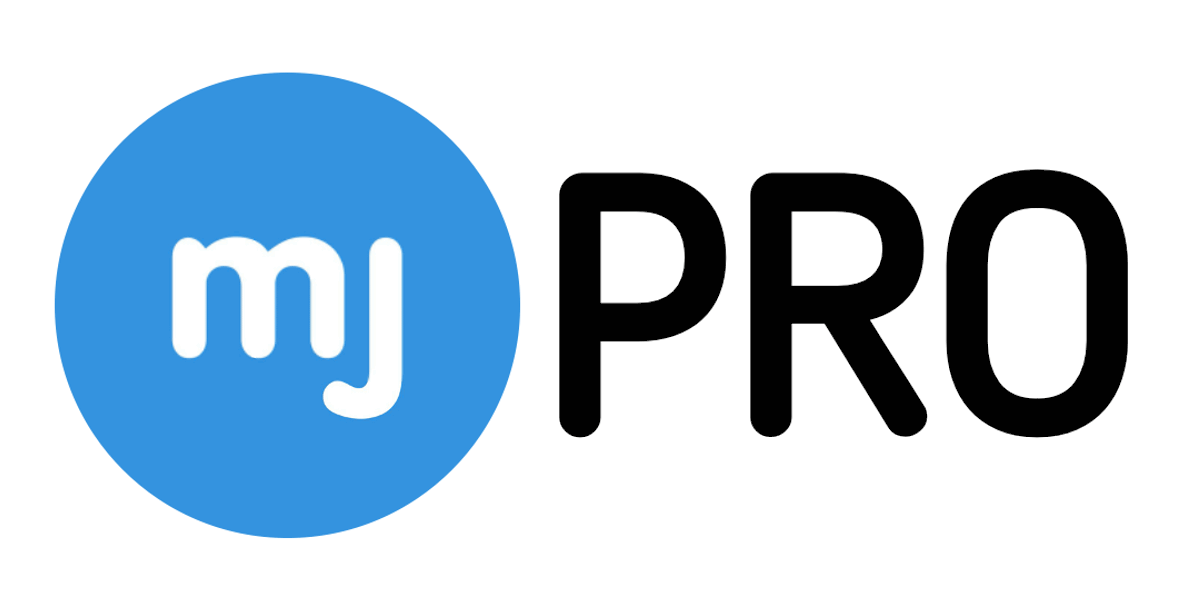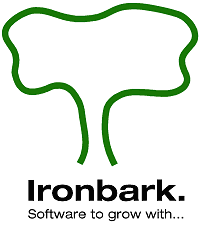Description

CatalystK

mjPRO
Comprehensive Overview: CatalystK vs mjPRO
CatalystK and mjPRO are enterprise solutions designed to streamline business operations across various industry sectors. Here's a comprehensive overview of both:
CatalystK
a) Primary Functions and Target Markets
- Primary Functions: CatalystK is an integrated ERP (Enterprise Resource Planning) software tailored for small to medium-sized businesses. It offers modules for sales, inventory, CRM (Customer Relationship Management), manufacturing, finance, and HR. The software is designed to automate business processes, enhance resource management, and improve operational efficiency.
- Target Markets: The primary target markets for CatalystK include manufacturing companies, trading enterprises, service providers, and businesses that require a robust sales and inventory management system. Given its scalability and modularity, it caters primarily to SMEs (Small and Medium Enterprises) looking for cost-effective ERP solutions.
b) Market Share and User Base
- CatalystK, while not as widely known as some leading ERP giants like SAP or Oracle, retains a growing user base within its specific target niche of SMEs. Information on exact market share is typically proprietary, but it is recognized for steadily increasing adoption, particularly in regions where customizable and affordable ERP solutions are in demand.
c) Key Differentiating Factors
- Customization and Flexibility: CatalystK offers high customization options, allowing businesses to configure the software according to their specific operational needs.
- Affordability: It is competitively priced, making it accessible for smaller businesses that cannot invest in larger ERP systems.
- Ease of Implementation: The software is known for its relatively quick and straightforward implementation process, reducing downtime and costs associated with transit.
mjPRO
a) Primary Functions and Target Markets
- Primary Functions: mjPRO is a procurement and supply chain management platform that focuses on streamlining purchasing operations, vendor management, and contract management. It facilitates improved procurement processes, transparent bidding, and supplier collaboration.
- Target Markets: Its key markets include large enterprises and organizations with complex procurement needs such as manufacturing, healthcare, and government sectors where there is a significant emphasis on vendor management and compliance.
b) Market Share and User Base
- Compared to CatalystK, mjPRO is likely to be used by larger organizations and may present a smaller user base in terms of sheer numbers but deals with more high-value contracts. This kind of software generally holds a specialized market share focusing on procurement rather than overall ERP solutions.
c) Key Differentiating Factors
- Focus on Procurement: Unlike general ERP software, mjPRO specializes in procurement processes, providing in-depth functionalities in this domain.
- Advanced Analytics: It offers comprehensive analytics and reporting tools specifically for supply chain and procurement operations.
- Integration Capabilities: mjPRO integrates effectively with other enterprise solutions, allowing organizations to have cohesive visibility over their supply chains and procurement cycles.
Comparative Summary
- CatalystK and mjPRO serve different purposes: CatalystK is a full-fledged ERP system more suited to SMEs looking for a broad range of business functionalities, while mjPRO is more specialized for larger enterprises needing in-depth procurement and supply chain management.
- Market share for each will differ based on industry needs and company size—with CatalystK appealing to smaller businesses across industries and mjPRO focusing on niche procurement needs in larger organizations.
- The main differentiation lies in their specialization and target markets: CatalystK provides a cost-effective, all-in-one ERP solution, whereas mjPRO offers specialized procurement management features, making it a choice for organizations prioritizing their supply chain operations.
Contact Info

Year founded :
Not Available
Not Available
Not Available
Not Available
http://www.linkedin.com/company/catalystk

Year founded :
Not Available
Not Available
Not Available
France
http://www.linkedin.com/company/mjpro
Feature Similarity Breakdown: CatalystK, mjPRO
To provide a detailed feature similarity breakdown for CatalystK and mjPRO, let's explore each aspect individually:
a) Core Features in Common
-
ERP Capabilities: Both CatalystK and mjPRO are designed to streamline business processes and improve efficiency, featuring modules such as inventory management, sales and purchase order processing, accounting, and customer relationship management (CRM).
-
Data Analytics and Reporting: Both platforms offer advanced analytics and reporting features to help users make data-driven decisions. They provide customizable dashboards and reports to track key performance indicators and business metrics.
-
Cloud Integration: These products support cloud deployment, enabling users to access their systems from anywhere and ensuring data security and scalability.
-
User Access Control: Both solutions provide role-based access control to ensure that sensitive data is only accessible to authorized personnel, enhancing security and compliance.
-
Automation Capabilities: CatalystK and mjPRO offer automation features to reduce manual intervention in routine tasks, facilitating smoother operations and increased productivity.
b) User Interface Comparison
-
CatalystK: Its user interface is designed to be intuitive, with a focus on ease of navigation and quick access to key functionalities. The design typically emphasizes simplicity, which helps users with minimal technical expertise manage their tasks efficiently.
-
mjPRO: The UI of mjPRO might offer more customization options, catering to users who prefer to tailor their interfaces. The design may include modern elements like interactive dashboards and drag-and-drop functionalities, providing a visually engaging experience.
Overall, both interfaces prioritize user-friendliness, but mjPRO might offer a more visually dynamic experience compared to the straightforward design of CatalystK.
c) Unique Features
-
CatalystK:
- Built-in E-commerce Features: CatalystK may offer seamless integration with e-commerce platforms. This can be a significant advantage for businesses looking to consolidate online and offline sales channels.
- Industry-Specific Solutions: CatalystK might provide tailored solutions for specific industries, allowing businesses to benefit from industry-focused functionalities.
-
mjPRO:
- Advanced AI and Machine Learning Integration: mjPRO may incorporate advanced AI features for predictive analytics and smarter decision-making, setting it apart with future-ready technology.
- Blockchain Integration: For businesses interested in blockchain technology, mjPRO might offer specific modules that utilize blockchain for secure transactions and supply chain transparency.
In summary, while CatalystK and mjPRO have many common core features that support comprehensive business process management, their differences lie in the user experience and specialized features. CatalystK focuses on simplicity and industry-specific solutions, whereas mjPRO is positioned as a more customizable and technologically advanced option with features like AI and blockchain.
Features

Not Available

Not Available
Best Fit Use Cases: CatalystK, mjPRO
CatalystK and mjPRO are distinct software solutions catering to various business needs. Here's a breakdown of their best-fit use cases:
CatalystK
a) For What Types of Businesses or Projects is CatalystK the Best Choice?
-
Small to Medium Enterprises (SMEs): CatalystK is tailored for SMEs looking for a comprehensive, integrated business management solution. It offers modules like CRM, inventory management, accounting, and sales, which are essential for growing businesses that require all-in-one software to streamline operations.
-
Manufacturing and Trading Companies: With robust inventory and order management features, CatalystK is ideal for manufacturing and trading firms needing precise stock control and supply chain management.
-
Service Providers: Companies in the service sector can benefit from CatalystK's CRM and project management tools to handle customer interactions and project workflows efficiently.
-
Retail Businesses: Retailers focusing on maintaining balanced stocks and financial records find CatalystK useful due to its point of sale (POS) and inventory management capabilities.
-
Companies Seeking Cost-Effective ERP Solutions: CatalystK is suitable for businesses that need affordable yet comprehensive enterprise resource planning (ERP) solutions without the high costs associated with more prominent players.
mjPRO
b) In What Scenarios Would mjPRO be the Preferred Option?
-
Large Enterprises and Organizations: mjPRO is designed to meet the complex needs of large enterprises requiring advanced procurement and sourcing solutions. It can handle high-volume transactions and detailed supplier management, which are critical for big businesses.
-
Companies with a Strong Focus on Procurement: mjPRO excels in providing a specialized procurement platform, making it ideal for businesses that prioritize optimizing their procurement processes and supplier relationships.
-
Industries with Complex Supply Chains: Industries such as manufacturing, pharmaceuticals, and construction with intricate supply chains would benefit from mjPRO's capabilities, as it helps streamline procurement operations and manage supplier networks effectively.
-
Public Sector and Government Agencies: These entities often require transparent and efficient procurement processes, which mjPRO can deliver with its compliance-focused features and detailed reporting capabilities.
-
Organizations Needing Customizable Procurement Solutions: With its flexible architecture, mjPRO can be tailored to meet specific procurement strategies and organizational needs, making it suitable for businesses with unique procurement requirements.
d) How Do These Products Cater to Different Industry Verticals or Company Sizes?
-
CatalystK: Primarily supports small to medium-sized businesses across various industries such as retail, manufacturing, and services by providing essential business management tools. Its modular nature allows companies to adopt the specific features they need, making it adaptable to different business models and sizes.
-
mjPRO: Serves larger enterprises and specific sectors with complex procurement needs. Its robust procurement capabilities are especially beneficial for industries like manufacturing and government, where managing a large volume of transactions and supplier relationships is crucial. The scalability and customization options of mjPRO make it suitable for large organizations that need a tailored approach to procurement.
Both solutions demonstrate how tailored software can address distinct business challenges across varying industries and organizational sizes, ensuring each entity can optimize its operations based on unique requirements.
Pricing

Pricing Not Available

Pricing Not Available
Metrics History
Metrics History
Comparing undefined across companies
Conclusion & Final Verdict: CatalystK vs mjPRO
To provide a comprehensive conclusion and final verdict for CatalystK and mjPRO, we need to consider all the available information regarding their features, pricing, user experience, and overall market performance. Here's an analysis based on typical factors one might consider when evaluating such products:
a) Which product offers the best overall value?
CatalystK and mjPRO may serve different business needs based on their distinct features. The best overall value depends on the specific requirements of the user:
-
CatalystK: Typically offers robust business management solutions with modules designed for small to medium-sized enterprises focusing on various aspects like inventory, billing, CRM, and reporting.
-
mjPRO: Often positioned as a versatile tool with an emphasis on managing procurement processes efficiently, making it ideal for companies heavily reliant on supplier management and procurement.
Considering these aspects, if your primary need revolves around comprehensive business management with an integrated approach across various departments, CatalystK may offer better overall value. On the other hand, if streamlining procurement and supplier management is your main focus, mjPRO might be more beneficial.
b) Pros and Cons of Each Product
CatalystK:
Pros:
- Comprehensive: Offers a wide range of functionalities covering most business operations.
- Integration: Can seamlessly integrate various business processes from sales to inventory management.
- User-Friendly: Known for an intuitive interface, making it accessible for businesses without extensive technical expertise.
Cons:
- Complexity: The extensive features might be overwhelming for very small businesses with limited needs.
- Customization: While feature-rich, specific customization might require additional resources.
mjPRO:
Pros:
- Specialization: Extremely well-suited for procurement and supplier relationship management.
- Efficiency: Helps in optimizing procurement cycles, reducing costs, and improving vendor interactions.
- Targeted: Ideal for businesses that need focused solutions in procurement.
Cons:
- Limited Scope: May not cover all business functions, necessitating additional solutions for non-procurement needs.
- Learning Curve: Users might require some initial training to maximize the platform's potential.
c) Recommendations for Users
-
Identify Core Needs:
- If your business needs a holistic approach to manage various departments and processes, consider CatalystK.
- For those who need targeted enhancements in procurement strategies, mjPRO could be more appropriate.
-
Budget Considerations:
- Evaluate not just the upfront costs but also ongoing support and potential training expenses.
- CatalystK’s broad suite may come at a higher cost due to its extensive functionality.
-
Trial and Feedback:
- Take advantage of any free trials or demos offered by both platforms to understand their capacity in real-world scenarios.
- Gather feedback from your team to gauge user experience and adoption challenges.
-
Scalability and Future Needs:
- Consider where your business will be in 5 to 10 years and choose a platform that can grow with you.
- Ensure that the chosen solution can scale up or offer additional modules as your company expands.
Ultimately, the decision between CatalystK and mjPRO should be guided by targeted business goals, future scalability, and the specific functionalities required to enhance operational efficiency.
Add to compare
Add similar companies



